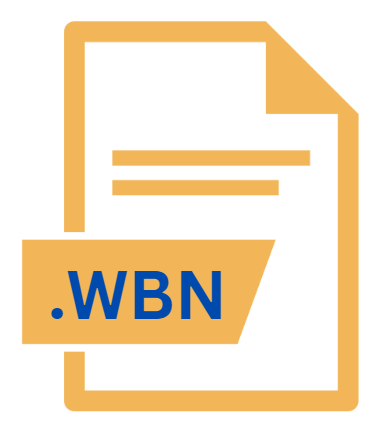.WBN File Extension

Web Bundle
| Developer | Web Incubator Community Group |
| Popularity | |
| Category | Web Files |
| Format | .WBN |
| Cross Platform | Update Soon |
What is an WBN file?
The .WBN file extension stands for Web Bundle, a file format designed to encapsulate a web application or a group of web resources into a single, self-contained package.
This file format simplifies the distribution, sharing, and deployment of web applications by consolidating multiple files into one bundle.
More Information.
The idea of web bundles traces back to the early 2010s when developers sought more efficient ways to manage and distribute web applications.
Initially, web applications were distributed as loose collections of files, making it cumbersome to manage dependencies and ensure consistency across different environments.
The .WBN file extension emerged as a solution to encapsulate all necessary resources into a single file, ensuring that web applications could be deployed consistently and reliably.
The initial purpose of the .WBN file format was to provide a standardized method for bundling web resources, facilitating easier sharing, distribution, and deployment.
This format aimed to simplify the process of transferring web applications between development, staging, and production environments, thereby improving the overall workflow for web developers.
Origin Of This File.
The .WBN file extension was introduced as part of the broader initiative to streamline web development and deployment processes.
With the increasing complexity of web applications and the proliferation of resources such as HTML, CSS, JavaScript, images, and other assets, there arose a need for a unified file format to package these resources efficiently.
The concept of web bundles aims to address these challenges by providing a standardized way to package and deliver web content.
File Structure Technical Specification.
A .WBN file is essentially a container that holds multiple web resources. The structure of a .WBN file typically includes:
- Manifest File: This is a JSON or XML file that describes the contents of the bundle, including metadata such as version, author, and dependencies.
- HTML Files: The main entry points of the web application.
- CSS Files: Stylesheets that define the look and feel of the application.
- JavaScript Files: Scripts that provide interactivity and functionality.
- Images and Media: Graphics, videos, and other multimedia resources.
- Fonts and Icons: Custom fonts and icon sets used by the application.
The technical specification of a .WBN file involves:
- Compression: To reduce file size, .WBN files often use compression algorithms such as ZIP or GZIP.
- Integrity Checks: Ensuring the integrity of the bundled resources through checksums or hashes.
- Dependency Management: Listing and resolving dependencies within the manifest file to ensure all required resources are included.
How to Convert the File?
Converting a .WBN file to other formats typically involves extracting the bundled resources. Here’s how you can convert a .WBN file:
- Manual Extraction: Use a file compression tool like WinRAR, 7-Zip, or any other tool that supports ZIP or GZIP to extract the contents of the .WBN file. Once extracted, you can access the individual HTML, CSS, JavaScript, and other files.
- Automated Tools: Some development tools and frameworks provide built-in support for creating and extracting .WBN files. For example, using a build tool like Webpack with specific plugins can help automate the process of bundling and unbundling resources.
Advantages And Disadvantages.
Advantages:
- Simplified Deployment: By bundling all resources into a single file, .WBN files simplify the deployment process, reducing the risk of missing files or incorrect configurations.
- Efficient Distribution: Web bundles make it easier to distribute web applications, whether for local development, testing, or production deployment.
- Consistency: Ensuring that the same version of the application is deployed across different environments, reducing the likelihood of discrepancies.
- Reduced Load Times: Bundling and compressing resources can lead to faster load times, as the browser can download a single file rather than multiple individual files.
- Offline Access: Web bundles can facilitate offline access to web applications, as all necessary resources are contained within the bundle.
Disadvantages:
- Complexity: Creating and managing .WBN files can add complexity to the development workflow, especially for small projects.
- Compatibility: Not all web servers and browsers fully support the .WBN file format, potentially limiting its use.
- Debugging: Debugging issues within a bundled application can be more challenging, as resources are compressed and encapsulated.
- File Size: Depending on the size of the application, .WBN files can become large, leading to longer download times.
How to Open WBN?
Open In Windows
To open a .WBN file on Windows:
- Compression Tools: Use tools like WinRAR, 7-Zip, or WinZip to extract the contents of the .WBN file.
- Web Browser: Some modern web browsers may support opening .WBN files directly. You can try dragging the .WBN file into the browser window.
- Development Tools: IDEs like Visual Studio Code, Sublime Text, or Atom can be used to inspect and edit the contents after extraction.
Open In Linux
To open a .WBN file on Linux:
- Compression Tools: Use tools like unzip, tar, or file-roller to extract the contents.
- Web Browser: Use browsers like Firefox or Chrome to open the .WBN file directly.
- Development Tools: Use text editors and IDEs like Vim, Emacs, or Visual Studio Code to inspect and edit the contents.
Open In MAC
To open a .WBN file on macOS:
- Compression Tools: Use tools like The Unarchiver, Keka, or built-in Archive Utility to extract the contents.
- Web Browser: Modern web browsers like Safari, Chrome, or Firefox may support opening .WBN files directly.
- Development Tools: Use IDEs like Visual Studio Code, Sublime Text, or Atom for inspecting and editing the contents.













